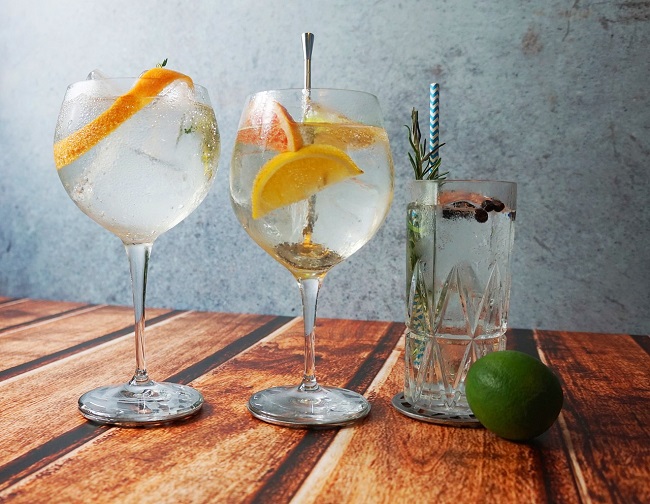
by Scott Ronalds
Gin is having a moment. The juniper-based spirit is everywhere these days. And it’s no longer a ‘bottom shelf’ liquor to boot. Production and sales of craft gin and high-end bottles are booming. According to The Economist and the Wine and Spirit Trade Association (WSTA), global sales of premium bottles are growing at around 20% annually, two-and-a-half times the rate of overall spirits.
Celebrities are getting in the game, too, a leading indicator that the tipple has gone mainstream, with Ryan Reynolds’ Aviation Gin making waves (check out his brand’s clever marketing campaign). And let's not forget, it’s Queen Elizabeth II’s drink of choice, paired with Dubonnet.
What’s more, bars and restaurants now have entire menus based on the spirit’s namesake cocktail, the gin & tonic. But be prepared the next time you order one, for the days of Beefeater and Canada Dry are gone. You’ll be presented with a list of options for your gin preference, and there are more choices than ever these days. “Do you like heavy juniper, more citrus, licorice forward, or a spicy coriander finish?” And not just any old tonic will do. Your cocktail will probably be mixed with a designer bottle of carbonated quinine. You know, one with elderflower, pomegranate and angostura bark.
I experienced this “ginaissance” first-hand the other week. I was out for dinner at a tapas place and picked up the cocktail menu. Half of it was devoted to gin & tonics. I figured I’d see what all the fuss was about. But when the server came to take our order, I froze. There were too many options. So I just reeled off one of the names in the middle of the menu. Turned out to be a mistake (a thirteen dollar one). It was heavy on pepper and came with a pickled bean. This was not your father’s G&T.
I felt an odd sense of regret and was annoyed with the whole experience. Have I turned into a surly Gen Xer? Maybe. But it seems to me that the gin movement is going the way of so many other trendy products. There’s way too much choice. It’s become dizzying for the consumer.
There’s a good book on this issue by Barry Schwartz titled The Paradox of Choice: Why More is Less. Schwartz argues that “the dramatic explosion in choice—from the mundane to the profound challenges of balancing career, family, and individual needs—has paradoxically become a problem instead of a solution.” He suggests that by eliminating choices, we can greatly reduce the stress, anxiety and busyness of our lives.
Some very successful businesses would agree. In-N-Out Burger has an intense focus on simplicity when it comes to its menu. Trader Joe’s offers a tightly curated range of each product it sells rather than a mass selection. Same goes for Dollar Shave Club.
In the investment world, the product shelf is endless and our team has seen how it can paralyze an investor. When too many choices are offered, uncertainty, regret and inertia have been proven to take hold (not to mention performance chasing), which can lead to suboptimal decisions and a poor overall experience. Which is why we believe, too, that more is less.
We're not a bank.
Which means we don't have to communicate like one (phew!). Sign up for our blog to get the straight goods on investing.

